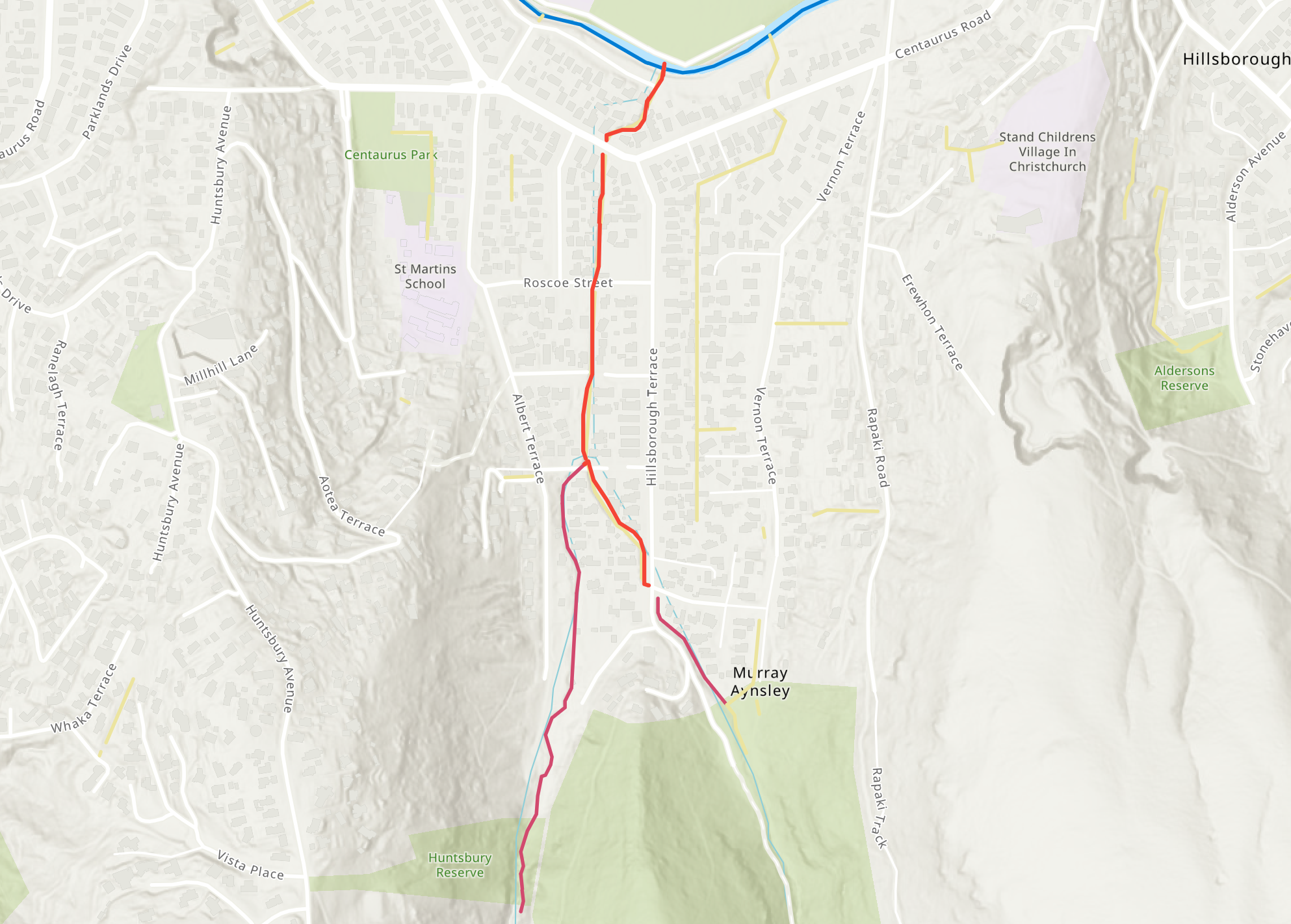It is not definitively known how this drain came to be named but it is likely that it is associated with the end of World War I. It could be that a drain was re-named Victory, or that a new drain, completed at this time was named in honour of the end of the war. There is also a possibility that the drain was completed by ex-servicemen as a labour scheme. Strangely, no records have been found in the archives to confirm the naming.
Victory Drain
Naming
Where it joins the river
About the waterway
The waterway is largely an open trench lined with boards or concrete that takes the low-flow streams from the gullies leading from Mt Vernon Park to the river. Just downstream of Willock Place, the drain branches into two. At most times of the year, there is a low residual flow in the drain.


